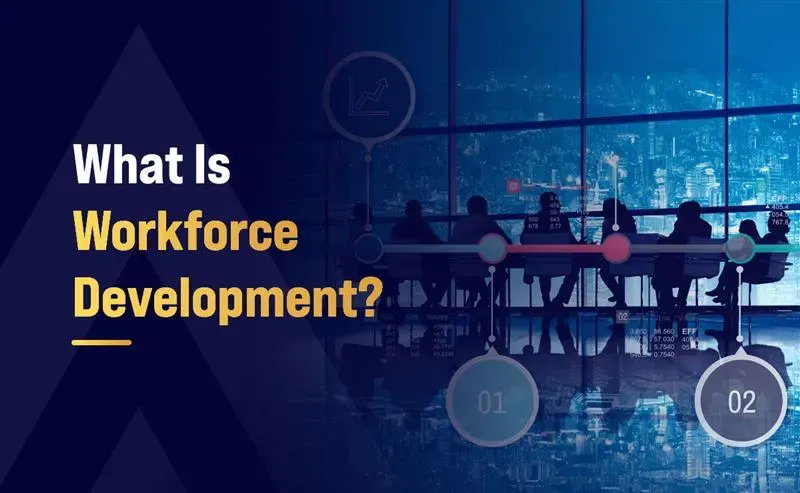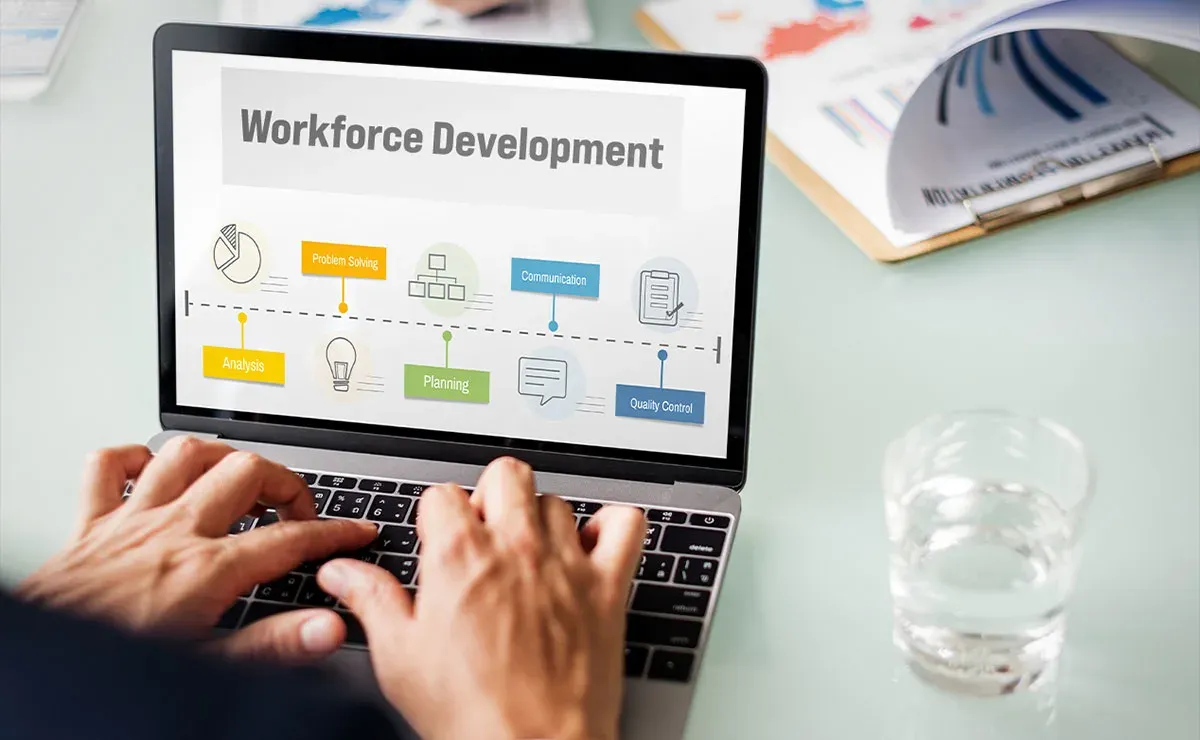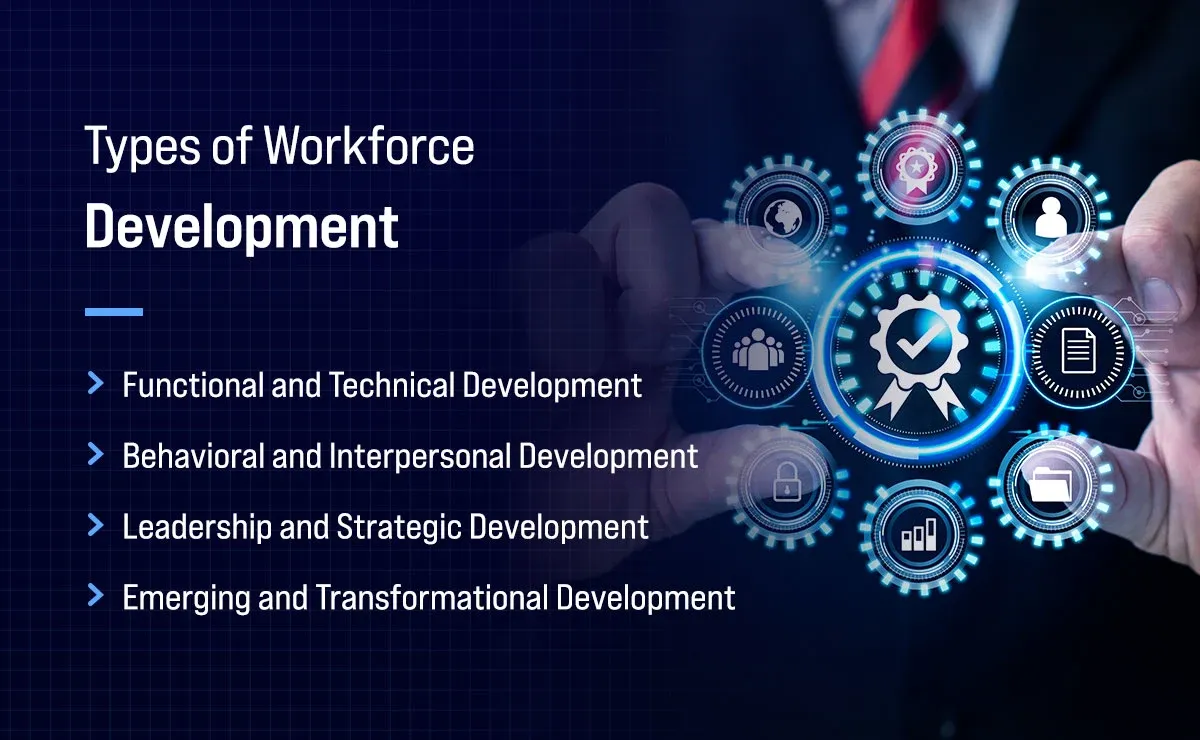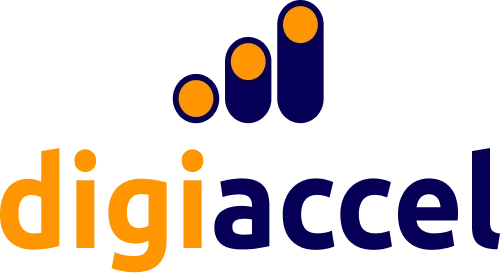What Is Workforce Development?

In an era defined by rapid technological change and shifting market dynamics, businesses face two interrelated challenges: keeping pace with new technologies and securing the talent needed to drive growth. The true competitive advantage today belongs to employers and the organizations that anticipate tomorrow’s talent needs and cultivate them today.
This is where the concept of workplace development comes in. It is a holistic framework that builds and sustains a skilled, adaptable, and talented pool of professionals who can benefit organizations and communities alike.
This article explores what workforce development is in detail, explores its many program types, shares real‑world examples, and provides practical steps to integrate these initiatives into your learning & development (L&D) strategy.
Understanding Workforce Development
At its core, workforce development encompasses the strategies, programs, and partnerships designed to prepare people, both current employees and prospective entrants, to meet the evolving demands of the job market. It’s a holistic approach that goes beyond one‑off corporate training sessions, weaving together education, on‑the‑job experiences, career guidance, and continuous learning to build a resilient talent pipeline.
Key aspects include:
- Skill Enhancement: Combining technical and soft‑skill training to equip employees with both specialized expertise and essential interpersonal abilities.
- Career Mobility: Facilitating clear pathways for career advancement within or across industries.
- Labor Market Alignment: Responding dynamically to emerging roles, technologies, and business needs.
- Community Engagement: Partnering with nonprofits, government, and industry groups to broaden access and resources while creating an inclusive talent ecosystem.
- Well‑Being and Support: Providing financial aid, coaching, and mentorship to remove barriers and foster sustained employee motivation and growth.
Together, these elements create a sustainable pipeline of qualified professionals poised to step into in‑demand roles and advance their careers over time.
The Benefits of Workforce Development
Here are the benefits of workforce development for both employers and employees.

For Employers:
- Enhancing Performance: When teams receive targeted training, they execute tasks more swiftly, with greater accuracy and minimal oversight, translating directly into seamless operations and healthier profit margins.
- Loyalty Through Learning: Investing in employees’ growth signals genuine commitment towards fostering a culture where talent chooses to stay and build long‑term careers rather than jump ship.
- Talent Beyond Job Descriptions: By upskilling candidates who might lack every checkbox on your wish list, you unlock a diverse pool of motivated individuals who are eager to learn and contribute.
- Culture of Creative Problem‑Solving: Structured development programs ignite collaboration and critical thinking, equipping your workforce to tackle challenges proactively and keep your business ahead of the curve.
- Employer of Choice Status: Companies know that nurturing their workforce attracts top performers organically and helps boost their brand as an employer that champions continuous growth.
For Employees:
- Skills That Open Doors: From mastering cutting‑edge technologies to honing leadership and communication, employees gain competencies that pave the way for promotions or exciting lateral moves.
- Resilience in Uncertain Times: Upskilling into transferable in‑demand skills offers a safety net against market fluctuations, making such professionals indispensable even when roles evolve.
- Increases Earning Potential: Higher credentials and advanced skill set often command premium compensation, empowering individuals to reach new financial milestones.
- Fulfillment Through Growth: The confidence that comes from continuous learning and clear career milestones boosts morale, turning daily work into a source of pride rather than drudgery.
Engaging in Workforce Development by Employers
Active employer engagement in workforce development is not merely a philanthropic gesture, but a strategic investment in the long-term success of both businesses and the broader economy. Employers are key stakeholders in shaping a skilled, adaptable, and future-ready workforce. Their involvement ensures that workforce development programs stay aligned with real-time industry demands and that employees are equipped to thrive in dynamic work environments.
Here’s how organizations can actively and effectively engage in workforce development to build long-term talent pipelines, drive innovation, and sustain economic growth.
Prioritize Quality and Relevance
Employers are most likely to invest in workforce development when they can see clear, measurable benefits to their business. This means partnering with programs that demonstrate:
- High-quality candidate preparation.
- Practical training that mirrors real workplace expectations.
- Consistency in performance outcomes (e.g., retention rates, job readiness).
Employers should advocate rigorous training standards, participate in candidate evaluations, and provide feedback to help programs refine their offerings.
Adopt a Business-Oriented Mindset
To effectively engage with workforce programs, employers must see the partnership as a business transaction, not charity. This means:
- Treating workforce development providers like business partners.
- Sharing industry insights and operational needs.
- Expecting responsiveness, professionalism, and outcomes from these collaborations.
Organizations that approach workforce partnerships with business acumen, clear communication, defined objectives, and ROI awareness can establish better, more productive relationships with employers.
Use Data and Labor Market Intelligence
Employers should contribute real-time labor market information to help workforce development providers align training programs with actual business needs. This includes:
- Highlighting in-demand roles and skills.
- Providing wage benchmarks and promotion pathways.
- Offering insights into industry trends and technological shifts.
Employers that actively shape curriculum design and workforce strategies ensure training programs remain relevant and forward-thinking.
Designate Internal Champions
Effective employer involvement requires more than casual participation. Appoint a senior staff member or team to oversee workforce development partnerships. This role includes:
- Serving as the main point of contact.
- Coordinating internal resources for training or mentorship.
- Tracking the impact of initiatives on business outcomes.
Establishing clear roles and responsibilities ensures consistency and long-term commitment from the employer’s side.
Offer Work-Based Learning Opportunities
Hands-on experience is a critical component of effective workforce development because it bridges the gap between theory and practice. By engaging directly in real or simulated work environments, employees and trainees not only apply what they've learned but also develop practical skills, confidence, and familiarity with job-specific tools and processes. Employers can:
- Provide internships, apprenticeships, or co-op placements.
- Host simulated job environments or workplace tours.
- Offer job shadowing opportunities or temporary assignments.
Such opportunities help trainees build confidence, apply skills in real settings, and gain a clearer understanding of job expectations.
Job Training vs. Workforce Development
Below is a detailed comparison between job training and workforce development.
Aspect | Job Training | Workforce Development |
Primary Focus | Focuses on teaching employees the skills required to perform their current job roles effectively. | Encompasses current and future skills, preparing employees for growth, leadership, and industry changes. |
Scope | Narrow in scope; typically limited to job-specific tasks and immediate performance needs. | Broad in scope; includes technical skills, soft skills, leadership development, and cultural awareness. |
Timing and Frequency | Often delivered during onboarding or periodically throughout the year on a fixed schedule. | Ongoing and continuous; part of a long-term organizational learning and improvement strategy. |
Learning Objectives | Aims to ensure employees are competent in their day-to-day responsibilities. | Aims to build well-rounded professionals equipped to adapt, lead, and collaborate in evolving workplaces. |
Examples of Content | Role-specific training such as software tutorials, machine operation, or product knowledge. | Includes diversity and inclusion training, conflict resolution, team building, upskilling, reskilling, and more. |
Goal Orientation | Oriented toward short-term task performance and productivity in the employee’s current position. | Oriented toward long-term employee development, engagement, and retention across various career stages. |
Employee Engagement Impact | May feel obligatory or routine; limited in impact if not reinforced or expanded. | Encourages deeper engagement, ownership, and job satisfaction by investing in the holistic development of an employee. |
This differentiation illustrates how job training serves immediate operational needs, while workforce development offers a more holistic, strategic approach that nurtures long-term organizational capability and employee success.
Types of Workforce Development
We can segregate workforce development into the below types:–

Functional and Technical Development
This category of program sharpens the hard skills that power your core operations. Employees learn to configure and maintain complex systems, operate precision machinery, and extract actionable insights from advanced analytics platforms. By deepening these hard skills, your workforce minimizes downtime, drives process improvements, and sustains the high levels of accuracy and efficiency that customers expect.
Behavioral and Interpersonal Development
Effective collaboration hinges on strong interpersonal skills. This training program builds active listening, empathy, and emotional intelligence, enabling team members to give constructive feedback, navigate conflict, and forge resilient working relationships. When employees master these behaviors, they communicate more clearly, foster a supportive culture, and adapt more quickly to shifting priorities.
Leadership and Strategic Development
To guide teams through uncertainty and growth, leaders require more than just technical expertise. This training program, hence, develops vision setting, strategic decision‑making, and stakeholder engagement skills. Participants practice leading cross‑functional initiatives, coaching high‑potential talent, and driving continuous innovation. The result is a team of leaders who can translate big‑picture goals into concrete actions and inspire others to exceed expectations.
Emerging and Transformational Development
Staying ahead of disruption means cultivating entirely new competencies. This training introduces employees to cutting‑edge domains such as machine learning applications, sustainable business models, and immersive customer‑experience design. By embedding these forward‑looking skills, your organization creates agile talent that can identify emerging opportunities, launch pioneering projects, and secure long‑term competitive advantage.
Barriers to Workforce Development
Despite the clear benefits of workforce development, there are also certain challenges that employers and organizations should know about.
Program Access and Coordination
Workforce development efforts often involve multiple agencies, training providers, and funding streams. When these entities operate in silos, participants encounter confusing eligibility rules and duplicated services. Policymakers face challenges integrating vocational training and employment programs into a unified system, which hampers seamless referrals and consistent quality of the service.
Funding Limitations
Sustaining robust workforce initiatives requires stable funding for both program delivery and participant support. Although federal grants are available, the application processes are highly competitive and require significant administrative capacity. Many non‑profit providers struggle to cover overhead costs, and prospective learners may lack the resources for tuition, materials, or lost wages during training.
Data Use and Outcomes Measurement
Understanding what works and why depends on reliable, standardized metrics. However, disparate reporting requirements across agencies and inconsistent data collection methods obscure program impact and return on investment. Efforts to develop common performance indicators and shared data platforms are ongoing but have not yet achieved widespread adoption.
Individual Barriers
Even when high‑quality programs exist, many individuals confront personal obstacles that limit their participation. Lack of affordable childcare, unreliable transportation, health concerns, and limited access to the internet all create significant hurdles to enrollment and completion. Addressing these barriers requires wrap‑around supports such as stipends, training labs, and digital literacy initiatives.
Summing Up
Workforce development is no longer just an HR initiative, but a strategic imperative that drives organizational resilience, innovation, and sustainable growth. By weaving together technical training, leadership cultivation, and holistic support, employers can build a continuously upskilled talent pipeline ready for tomorrow’s challenges.
Overcoming barriers, from funding gaps to data fragmentation, demands intentional collaboration, robust metrics, and wrap‑around supports that ensure every learner can participate and thrive.
When companies commit to this comprehensive approach, they foster a culture of continuous learning, elevate employee engagement, and secure a true competitive advantage.

